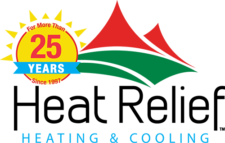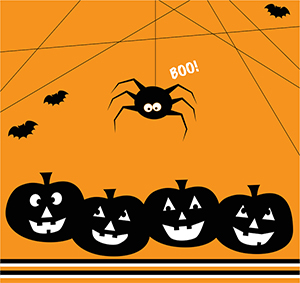It’s the season for spiders in dark corners, bats, and rodents of unusual size. These are some of the creepy critters we expect for Halloween–but not for our HVAC.
Insects and rodents of any size are never a welcome sight in your home. They can create bad odors, carry nasty bacteria, and cause significant damage to your expensive heating and cooling equipment.
For one thing, little critters love to nest in your outdoor air conditioning unit. A nest of rats or mice living there, chewing through wires, and creating all kinds of filth can cause serious performance issues. If they make it inside to the ductwork through unscreened vents or cracks in the ductwork seals it can lead to air quality issues.
Rodent infestations can be dangerous to your health, spreading disease to humans directly through contact with feces, urine, or saliva (bites), or indirectly through fleas, ticks, and mites that have feasted on infected animals. And insects are no better: cockroaches carry diseases, including diarrhea, dysentery, typhoid fever, and cholera. They can also cause allergic reactions or trigger asthma symptoms.
If you try to rid yourself of an infestation, you may make the problem worse. Pesticides can compound the problem by affecting your home’s air quality. Once they’re in, you need to engage the services of a professional exterminator to get rid of them safely.
But the best thing to do is prevent them from getting in.
Pest prevention
There are certain areas that are especially easy for creepy critters to invade your ventilation system, such as exterior vents, outside equipment, and the ductwork.
Vents—Vents and flues to the outside like attic, soffit, or dryer vents are all ways for pests to enter your home. Cover them with screen mesh to keep critters out.
Ducts—If your ventilation ducts are not properly sealed the cracks can provide an entry point for pests. If they move in there, it can result in odor and allergens being circulated through your ductwork into your home. Have your ducts cleaned – or at least examined – regularly by an HVAC professional. Additionally, a dehumidifier in the summer will help dry out the air and make the eggs unable to hatch.
Outdoor units—Your outdoor heating and air conditioning equipment can be a beacon to small pests looking to nest someplace for the winter. It’s a good idea to keep the area clean around the unit and keep all foliage trimmed away for at least 2 feet. Stink bugs typically start seeking shelter in places like your AC unit beginning in the fall. If you have a problem with them, it’s a good idea to set out traps around your equipment.
Pests are pests, whether they’re capable of causing a lot of damage to your HVAC system or not. By taking a few steps to make your equipment less attractive to them, you can keep the critters out and prevent any damage to your home or health. For more information, you can always contact a local HVAC company to discuss pest prevention and equipment maintenance

